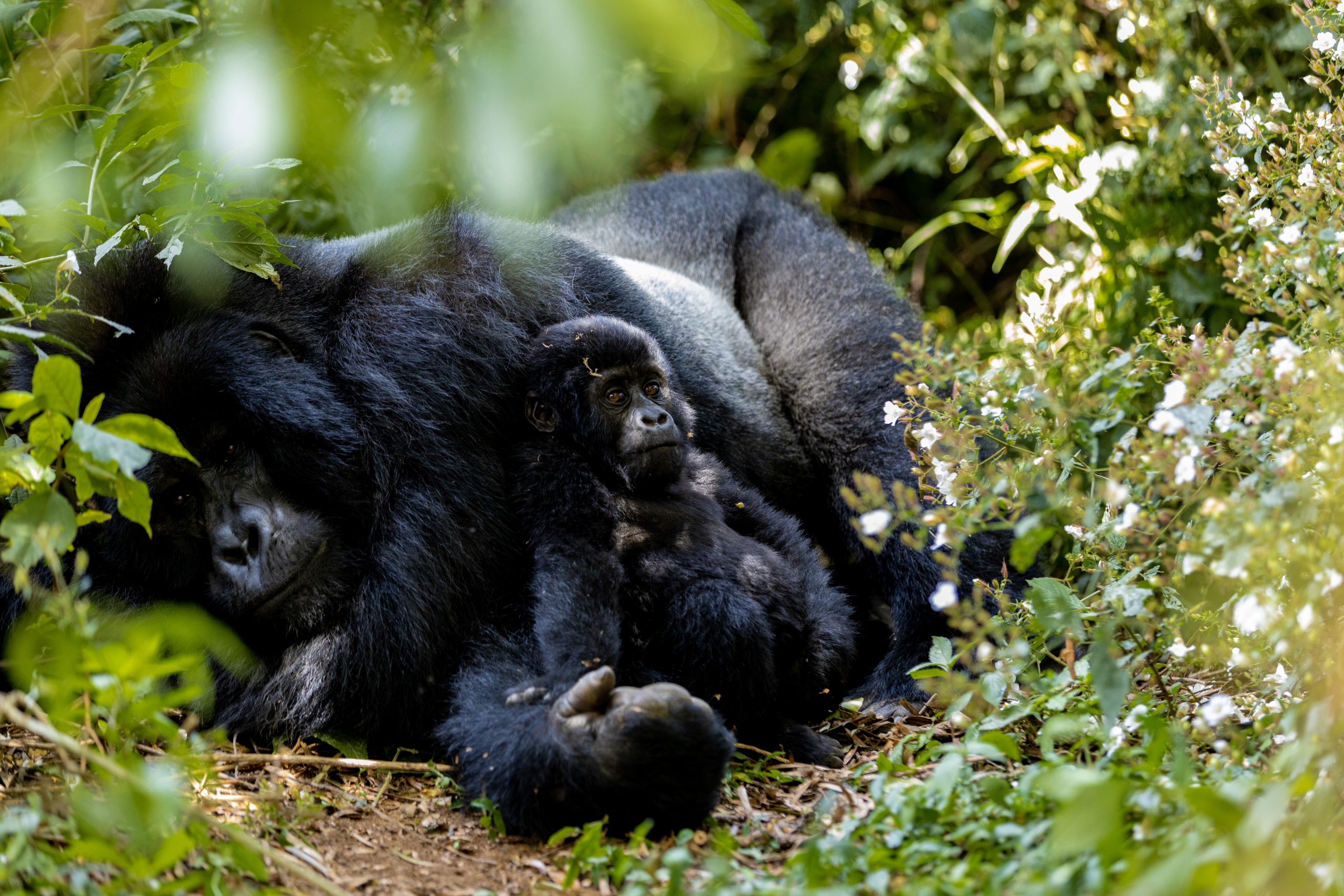FAQs
-
What is the total population of mountain gorillas in the world today?
According to the Bwindi – Sarambwe mountain gorilla census results released in Dec 2019, the estimated global figure of known mountain gorillas in the wild is 1063. Read more here.
-
How safe is it to visit the gorillas?
The gorillas are not aggressive and rarely react to the visitors, let alone behave in a threatening manner. Tourists must follow gorilla tourism rules in order to minimize the risk of disease transmission to gorillas and avoid causing stress to the animals (see Gorilla FriendlyTM Pledge). A twisted ankle, sustained during a heavy fall on the steep trails, is a far more likely occurrence than an injury resulting from a gorilla encounter.
-
What are the main threats to mountain gorillas?
Although poaching remains a serious issue, the greatest threats to mountain gorillas are habitat loss and disease (see Threats).
-
What is the difference between a mountain gorilla and other gorillas?
Mountain gorillas have longer hair and tend to be more grey than brown. Their faces are more densely covered in hair. Their family structure includes one or more mature males (silverbacks) and a group of females with or without infants and juveniles. Other gorillas have group structures with one silverback and group composition and group size changes much more frequently.
-
Why are there no mountain gorillas in captivity?
In the 1960s and 1970s, numerous attempts were made to capture live mountain gorillas and start a captive population. Many adult mountain gorillas were killed to obtain live babies, none of which survived in captivity. The reason why they failed to survive is unclear, since lowland gorillas have been kept and even bred successfully in captivity. Perhaps their dietary needs are more specific, or they were affected by stress and therefore succumbed to disease more rapidly. To date, no mountain gorillas are known to exist in any captive facility.
-
Which gorillas do you see in zoos?
All the gorillas in zoos are lowland gorillas. Most of them are actually western lowland gorillas.
-
How can I visit mountain gorillas?
Many tour operators provide trips to visit mountain gorillas in DRC, Rwanda and Uganda. Only a small number of people (8 people per gorilla group) can visit the gorillas each day, so it is important to book gorilla permits well in advance. Visiting the gorillas can be physically strenuous, so visitors must be moderately fit and suitably equipped for walking on forested mountain trails. Find out more about where gorilla tourism takes place at www.gorillafriendly.org/locations.
Do not forget to take the Gorilla FriendlyTM Pledge
-
What do I need to know before visiting mountain gorillas?
Every tourist needs to know and understand the great ape visitation rules ahead of their tracking visit but most importantly, they need to pledge to observe them by taking the pledge here. Taking the pledge gives you a rewarding experience and helps you minimize the risk of disease transmission to mountain gorillas.
